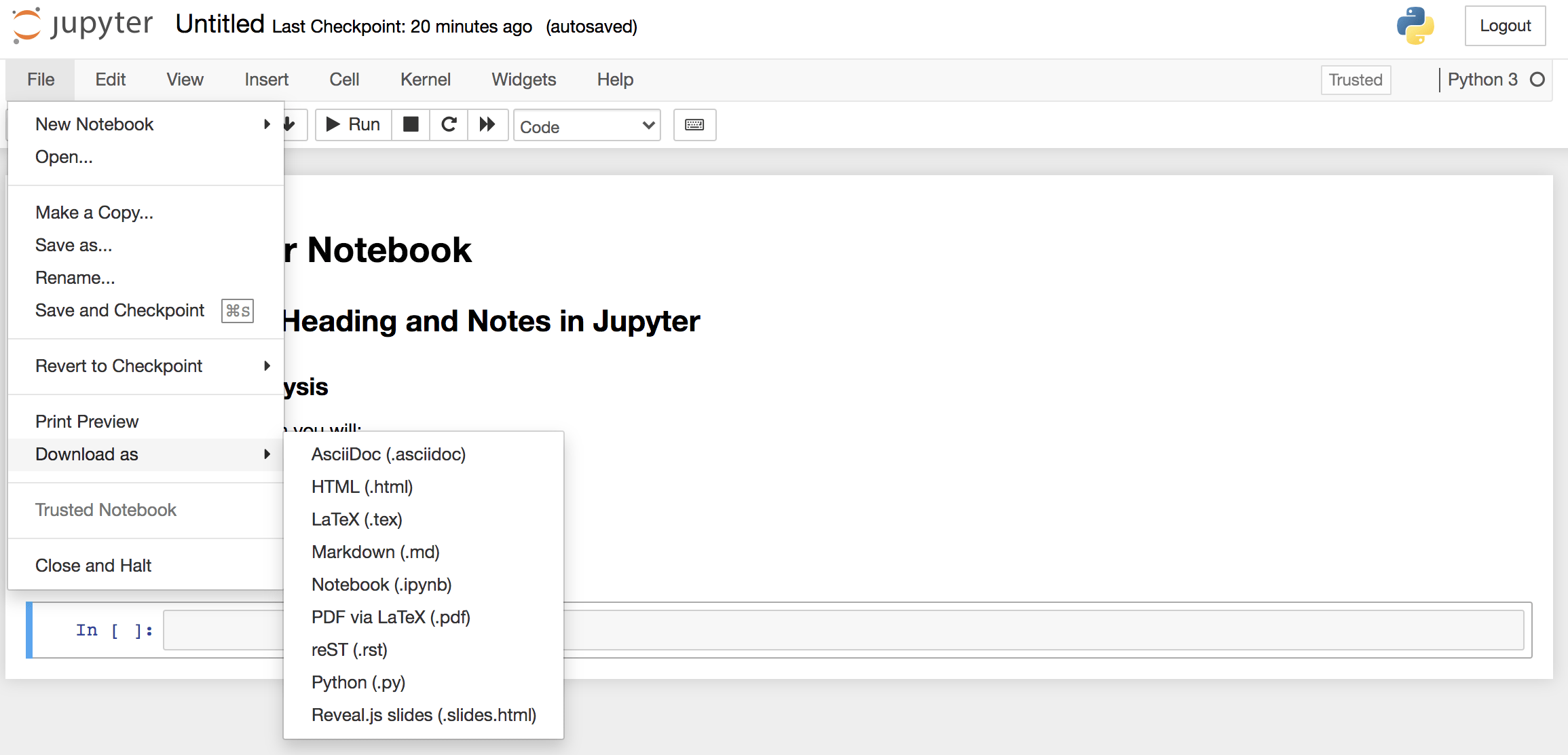
This cell is to write and execute actual Python code. There are majorly three types of cell in Jupyter. Different Types of Cell in Jupyter Python Notebook Let’s find little more about using different types of cell in Jupyter. Just click on Run, you have done with your Job. It’s pretty easy to execute Python program, isn’t it? You don’t need to execute any command line code. In above Image, you can see the different cell where you can split your code. You can rename the Jupyter file by double-clicking on it.

Then click on the new drop-down menu option (right-top option).Select the directory where do you want to save the Jupyter notebook program.You can see the local directories in your browser notebook.įollow the steps for Writing Your First Python Program in Notebook:
#How to install jupyter notebook in macos how to
How to Write and Run Jupyter Python Notebook | Your First Program Running Jupyter notebook command will open the notebook page in the new tab of the browser as localhost. Jupyter creates the localhost server to execute the Python programs. Running Jupyter Notebook python -m notebook Running Jupyter Notebook python3 -m notebook Python 2 python -m pip install -upgrade pipĬommands for installing Python packages for Python 2 versions are pretty straightforward. Remember, pip is package manager tool by default comes with Python binaries. py -m notebook Python 3 (older versions) python3 -m pip3 install -upgrade pip Once you installed it, run following command to run the notebook. Learn more about managing Python packages using Pip. Note: Managing Python module is crucial for Python developer.

#How to install jupyter notebook in macos upgrade
It is always good practice to upgrade pip before installing any Python module. Here, the first command is to upgrade the pip. Python 3.7 py -m pip install -upgrade pip

You can install the Jupyter Notebook from the Python standard library with simple commands. It provides an OS independent system, so you can use it for any of the operating systems like Windows, Linux (Ubuntu), MacOS, etc… Pip is the default package management system or tool for installing/uninstalling and managing different packages in Python. Installing Jupyter Python Notebook For Python 2 and 3


 0 kommentar(er)
0 kommentar(er)
